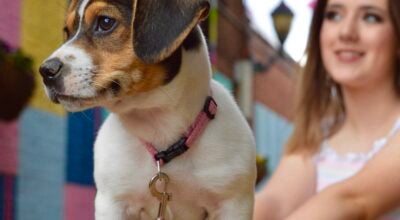Clark County’s early African-American churches
Published 10:36 am Friday, July 7, 2017
By Harry Enoch
I have collected information on black churches in Clark County with the thought of preparing brief sketches of those established in the 19th century.
With two exceptions, all of our known African-American congregations began after the Civil War. However, it was not until after emancipation that they were able to form churches. The favored denominations were Methodist and Baptist.
According to Dr. Thomas D. Clark’s Clark County, Kentucky: A History, “Documentary evidence describing the number and location of the colored Baptist congregations is skimpy.” And the same is true for Methodist congregations.
Establishment dates given in this article are taken from deeds of trustees purchasing property on which to build a church. While this may not be precisely accurate, other data are simply not available. Other documentation comes from county records and a few published church histories. The list of churches is fairly impressive, and it’s possible I may have missed a few.
The first black church established was Methodist, which later became Allen Chapel CME. Their history states that “a number of years before the Emancipation, the black people of this locality were permitted to worship in the basement of the First Methodist Church.”
Then, in February 1866, Joshua Neale and his wife sold a lot at the corner of Broadway and Highland Street to John Allen, James Winn and John Massie, trustees for the church. In 1870 the congregation joined the newly formed Colored Methodist Episcopal (CME) denomination. They built a frame church and parsonage; the former was replaced with a brick edifice in 1898 that still stands. The church had a long history but membership declined in recent years. The congregation is no longer active, and their building has been purchased by First Baptist Church.
First Baptist Church was established in 1867. According to a church history prepared by the Rev. Alvin W. Farris, the congregation first met in the home of Henry and Dullie Ecton. Members were drawn from Old Friendship Baptist and other churches around the county.
In August 1867 John and Anne Madigan sold a lot on North Highland Street to Madison Gentry, John Woodford and Lewis Hord, trustees for the Missionary Baptist Church. Rev. Farris stated the congregation rented a building on South Church Street (Church Alley) until members could erect a 30-by-36 foot structure on their lot. A brick church was built in 1893, and it was replaced in 1930 by the present brick structure on Highland Street. The sanctuary has now been completely updated and beautiful stained-glass windows installed.
Their expanded campus now includes a Family Life Center/gymnasium. The Harris Hoops Summer Basketball League was inaugurated there in June. The congregation is ably led today by their community-minded pastor, the Rev. Marvin King.
The first black congregation that has come to light began as members of Providence Baptist Church on Lower Howard’s Creek. This church, which came to Clark County in 1784, accepted its first black member in 1786.
Church minutes indicate that, beginning in September 1849, “the coloured brethren” were permitted to hold irregular meetings on their own. Then, in October 1854, the church agreed to allow regular Sunday meetings with the condition that “some two or more of the white brethren be present at each meeting.”
The black congregation continued to meet in this manner until after the Civil War. Finally, on July 4, 1868, 19 “Coloured Brethren & Sisters of this Church” were granted letters of dismission, presumably in order to form their own separate body.
White Providence members erected a new meeting house in 1870 on the road to Boonesborough, and in 1872 they sold their old church to “Thompson Ragland, Robert Bush, John Covington, Silas Gentry and Lewis Woodford, trustees of the Colored Baptist Church.”
All except Covington had previously been members of Providence. (Circumstantial evidence suggests an establishment date of 1868, but the only documentation is the 1872 deed.)
This congregation, today known as Providence Missionary Baptist Church, has been meeting continuously ever since. Their place of worship, long known as the Old Stone Church, is now the oldest operating church in Kentucky.
In November 1869, Dry Fork Colored Methodist Church purchased a lot from Pleasant Conkwright and wife Annie. Trustees Andrew Rucker, Peter Buckner and Click Vivion paid $50 for two acres of land on the Dry Fork of Upper Howard’s Creek. This would have been in the Ruckerville area. Their pastor in 1870 was Reuben Taylor. No other information found.
The third Methodist congregation, Clark Chapel AME, is now known as Clark United Methodist Church. Its original members came from Allen Chapel CME. They withdrew from that congregation when it departed from the much older African Methodist Episcopal (AME) conference.
They purchased a lot at the corner of Church Alley and Broadway known as “the Old William Factory.” The sale was made in January 1870 to trustees Reuben Ragland, Shelton Jones and William Irvin.
An 1872 deed indicates the congregation first met in the old factory: “The brick house that was formerly used as a carding Factory but is now owned by the African Methodist Church and used as a Meeting House….” They sold this building to Ernest Jordan in 1926 and moved to a new church at the corner of Broadway and Burns Avenue.
Clark United Methodist is an inclusive, neighborhood-focused church currently pastored by Chrysanthia Carr-Seals.
Their original building on East Broadway has been purchased by Pillar of the Community and is currently being restored by Mt. Folly Enterprises.
Thanks to Lyndon Comstock, who prepared voluminous, detailed information on the African-American members of Providence Baptist Church and whose book will soon be forthcoming.
Harry Enoch, retired biochemist and history enthusiast, has been writing for the Sun since 2005.




